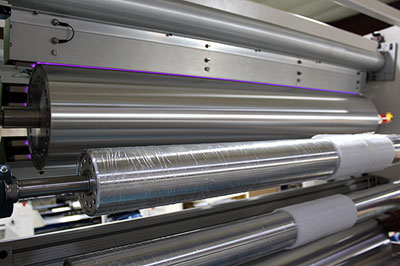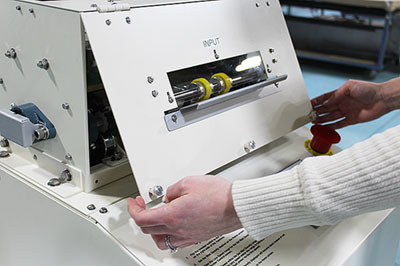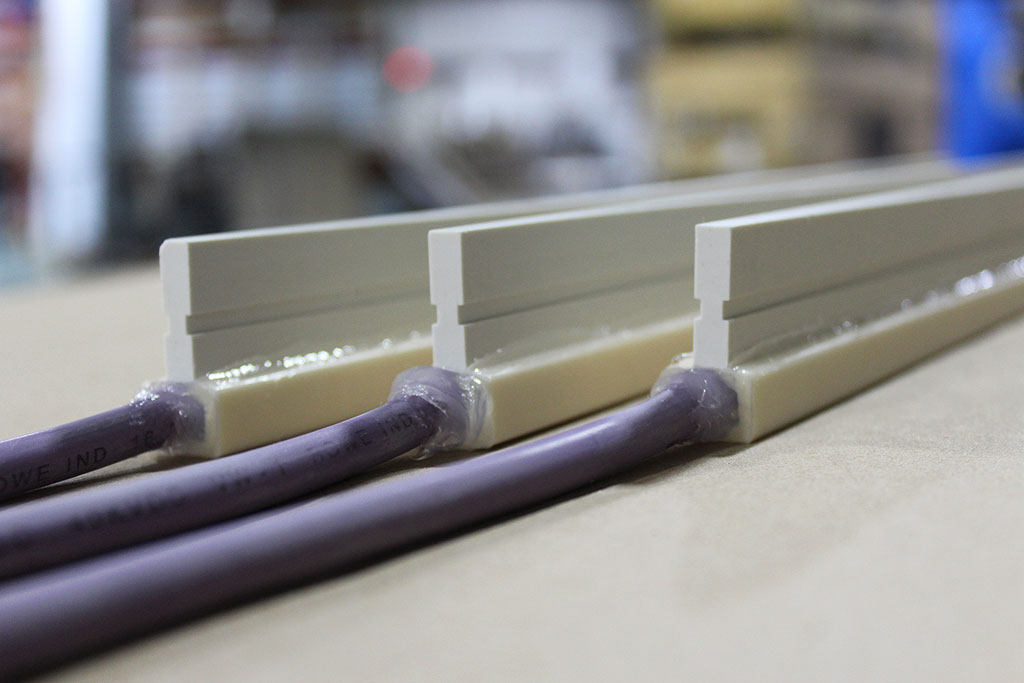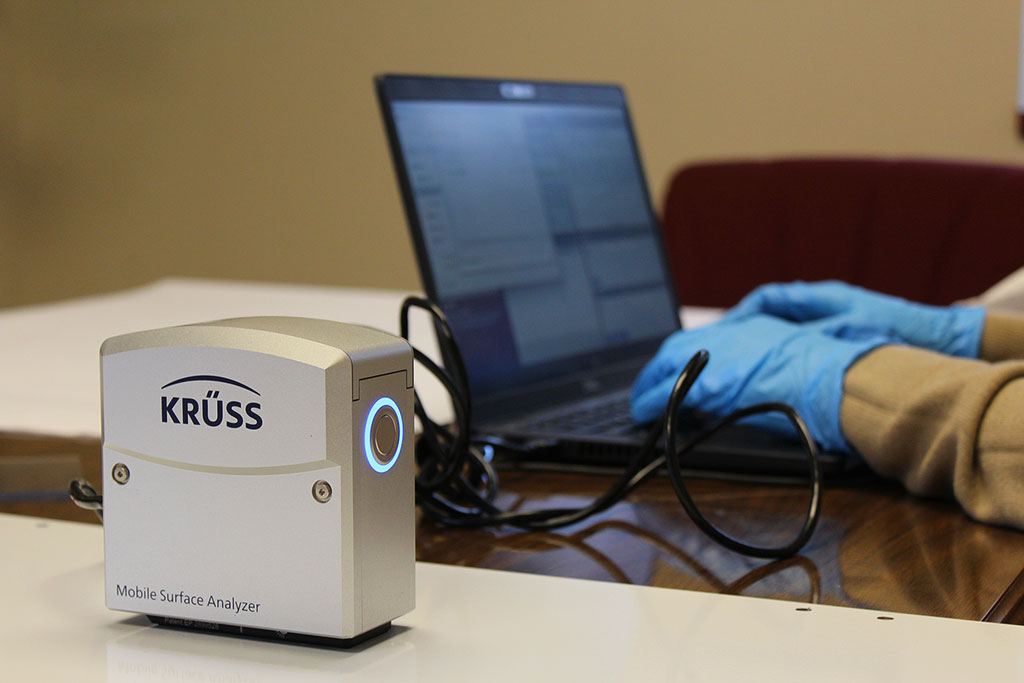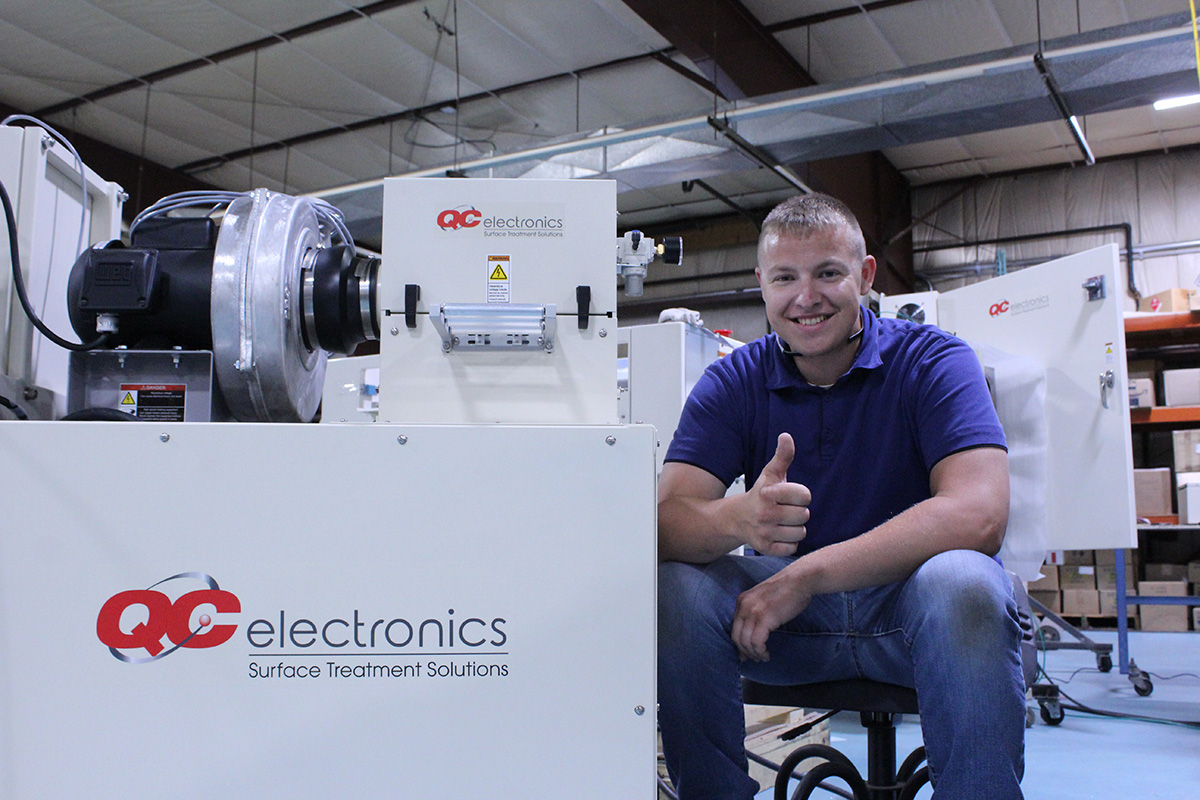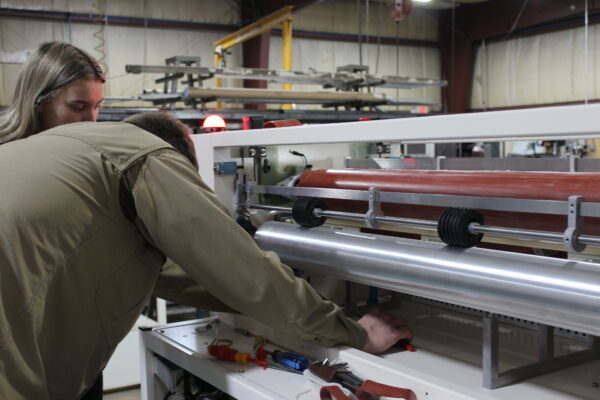Corona Treatment Crash Course: Printing on Polymers
If you understand the fundamentals of corona treatment in printing on polymers, you’re already on your way to success! With the right corona treater and a solid grasp of your ink’s chemistry, you can print on virtually any polymer surface.
Polar Functional Groups
Corona treatment increases the surface energy of a hydrophobic (nonpolar) material by introducing polar functional groups (such as carbonyl, hydroxyl, or carboxyl groups) to its surface.
This makes the material more receptive to inks, adhesives, and coatings that also contain polar components. In other words, corona treatment enables the substrate to form connections with the ink in areas where bonding was previously impossible.
The Nature of the Inks
All flexographic inks contain both polar and nonpolar components, but the ratio and type of each vary depending on the ink formulation and intended substrate. Understanding the ink helps us understand corona dosage required and ultimately predict a bond!
Water-based inks are more polar, relying on water as a solvent, while solvent-based inks lean nonpolar, using organic solvents. UV-curable inks have a balanced mix of both.
Since most polymer films are naturally nonpolar, untreated, nonpolar surfaces reject ink, leading to poor print quality and adhesion failures. Corona treatment ensures the right balance of polar and nonpolar interactions, allowing inks to anchor properly and form lasting bonds. Without it, even the best ink formulations wouldn’t be able to achieve a bond on nonpolar substrates.
Polarity and Bonding
The key to a strong bond lies in the compatibility between the polar functional groups introduced by corona treatment and the chemistry of the ink or adhesive.
Since most inks contain both polar and nonpolar components, they need a surface that offers the right balance—enough polar sites for strong attraction but also some nonpolar areas to maintain cohesion.
KRUSS illustrates this concept using handshakes—a brilliant analogy! Imagine the polar parts of the ink reaching out, searching for something to grab onto. If the surface has no corresponding polar sites, the connection can’t happen. But when both sides have polar components? They bond seamlessly.
Ink-Substrate Interaction
What’s more? You don’t need perfect wetting for a strong bond. That’s because ink itself isn’t completely polar!
Instead, ink has a mix of polar and nonpolar components, meaning the polymer must retain some of its dispersive (nonpolar) characteristics for the ink to adhere properly.
While higher surface energy improves wetting, true adhesion depends on the balance of polar and nonpolar interactions. If the corona treatment is too aggressive, the surface may become over-oxidized, weakening bonds rather than strengthening them.
Adjusting Corona Treatment Dosage
Not all polymers require the same level of corona treatment. The right dosage ensures optimal bonding without damaging the material.
- Too little treatment: The surface remains too hydrophobic, preventing adhesion.
- Too much treatment: The surface becomes over-oxidized or starts to degrade, leading to weaker bonds and a shorter activation lifespan.
Finding the perfect balance for your specific material and ink is key to achieving strong, reliable prints every time.
Final Thoughts
With a corona treater and a solid understanding of ink chemistry, printing on polymers becomes a controlled, repeatable process. By fine-tuning surface energy and balancing polar interactions, you can confidently print on any polymer surface—ensuring crisp, durable, and high-quality results.
Article by Alyxandria Klein
